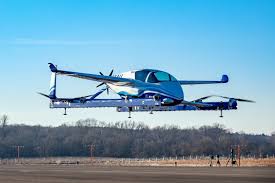
Breaking News
 James O'Keefe: My entire speech at AmericaFest 2025. We're not stopping. Join us to expose..
James O'Keefe: My entire speech at AmericaFest 2025. We're not stopping. Join us to expose..
 U.S. vs. Chinese Military Comparison – Focus on Asia-Taiwan Scenario
U.S. vs. Chinese Military Comparison – Focus on Asia-Taiwan Scenario
 DoJ Sues Four More States for Failing To Produce Voter-roll Data
DoJ Sues Four More States for Failing To Produce Voter-roll Data
 World's Largest Aviation Giant Abandons Google Over Security Concerns
World's Largest Aviation Giant Abandons Google Over Security Concerns
Top Tech News
 Perfect Aircrete, Kitchen Ingredients.
Perfect Aircrete, Kitchen Ingredients.
 Futuristic pixel-raising display lets you feel what's onscreen
Futuristic pixel-raising display lets you feel what's onscreen
 Cutting-Edge Facility Generates Pure Water and Hydrogen Fuel from Seawater for Mere Pennies
Cutting-Edge Facility Generates Pure Water and Hydrogen Fuel from Seawater for Mere Pennies
 This tiny dev board is packed with features for ambitious makers
This tiny dev board is packed with features for ambitious makers
 Scientists Discover Gel to Regrow Tooth Enamel
Scientists Discover Gel to Regrow Tooth Enamel
 Vitamin C and Dandelion Root Killing Cancer Cells -- as Former CDC Director Calls for COVID-19...
Vitamin C and Dandelion Root Killing Cancer Cells -- as Former CDC Director Calls for COVID-19...
 Galactic Brain: US firm plans space-based data centers, power grid to challenge China
Galactic Brain: US firm plans space-based data centers, power grid to challenge China
 A microbial cleanup for glyphosate just earned a patent. Here's why that matters
A microbial cleanup for glyphosate just earned a patent. Here's why that matters
 Japan Breaks Internet Speed Record with 5 Million Times Faster Data Transfer
Japan Breaks Internet Speed Record with 5 Million Times Faster Data Transfer
Boeing VTOL air vehicle prototype makes first flight

Known for now simply as the passenger air vehicle (PAV), the aircraft is part of the company's Boeing NeXt urban air mobility project. It's designed to fly autonomously, performing helicopter-like vertical takeoffs and landings, but switching over to faster and more efficient fixed-wing flight while en route.
It measures 30 feet long by 28 feet wide (9.1 by 8.5 m), and has a claimed battery range of up to 50 miles (80.5 km). Among other things, Boeing NeXt is also developing an electric cargo air vehicle (CAV), which can carry a payload of up to 500 lb (227 kg) – it made its first indoor test flight last year, with its outdoor testing scheduled to begin sometime this year.
This week's PAV flight was a test of the aircraft's autonomous functions and ground control systems, in which it successfully took off, hovered in place, and then landed. It was not carrying any passengers at the time. Subsequent flights are planned to evaluate its fixed-wing flight capabilities, along with its ability to smoothly transition between vertical and forward flight.

 Advanced Propulsion Resources Part 1 of 2
Advanced Propulsion Resources Part 1 of 2

